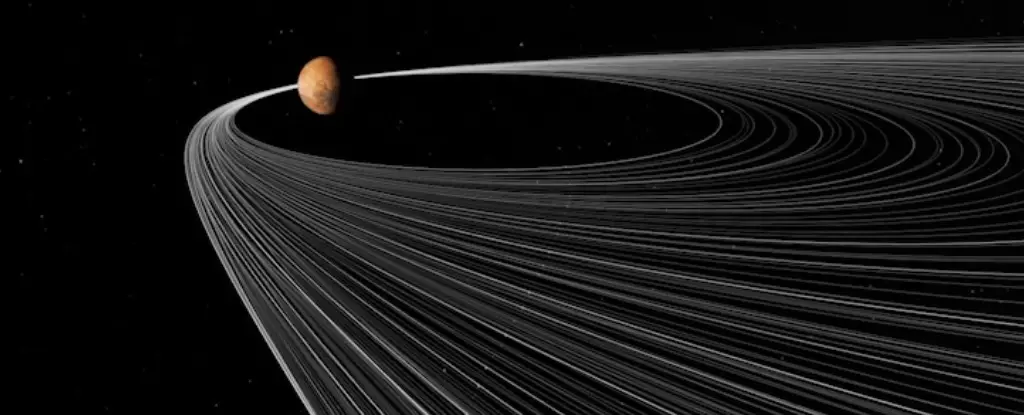In the celestial framework of our Solar System, Earth and Mars stand apart as the only rocky planets endowed with moons. While Earth’s moon has a well-established origin story involving a massive collision with a protoplanet named Theia, the origins of Mars’ companions, Deimos and Phobos, remain shrouded in ambiguity. This enigma invites scientific inquiry, and with innovative research methods aiding our understanding, it is imperative to delve into the prevailing theories regarding the genesis of these Martian moons.
The leading theories regarding the origins of Deimos and Phobos can be categorized into two significant models: the capture scenario and the impact scenario. The capture hypothesis posits that these moons are remnants of the asteroid belt that were ensnared by Mars’ gravitational field. This idea is compelling, particularly given that observations of the moons reveal characteristics akin to asteroids. However, such a scenario raises crucial questions regarding Mars’ capability to capture not one, but two small rocky bodies, considering its relatively weak gravitational influence compared to both Earth and Venus—planets that found no captured moons of their own.
Conversely, the impact model proposes that Deimos and Phobos resulted from a cataclysmic event in which a large body collided with Mars, revealing another layer of complexity. Estimates suggest that an object with 3% of Mars’ mass impacted the planet, creating a debris ring from which the moons could emerge. This explanation accounts for the relatively round orbits observed, diverging from the elliptical paths expected from captured bodies. Nevertheless, this model too presents challenges, primarily the tendency of debris rings to form in close proximity to the impacting planet, which does not align seamlessly with the positioning of Deimos.
Recent advancements in computer simulations have given rise to a new compromise model that blends elements from both the capture and impact theories. This innovative approach postulates that a near-miss by a sizable asteroid could have exerted sufficient tidal forces on the body, fragmenting it into smaller pieces that were subsequently caught in orbit around Mars. Such a scenario allows for the formation of both Deimos and Phobos without the complications posed by a traditional impact event.
As outlined by these simulations, the fragments’ initial orbits would begin in elliptical paths that would undergo a gradual transformation due to the gravitational influences exerted by the Sun and neighboring celestial bodies. Over time, this would lead to collisions and the eventual consolidation of some fragments, creating a more extensive debris ring than that typical of a planetary impact event. This explanation adeptly accounts for the observable dynamics of the Martian moons while sidestepping many of the limitations of its predecessors.
Despite the fascinating nature of the compromise model, it remains theoretical until direct samples from Phobos and Deimos can substantiate or contradict these hypotheses. The exciting prospect of the Mars Moons eXploration mission (MMX), set to launch in 2026, holds the promise of providing much-needed data. The mission will not only perform close-range explorations of both Martian moons but will also collect and return samples from Phobos. With these samples, scientists hope to unlock the secrets contained within these ancient bodies, leading to potential breakthroughs in understanding their origins, geological histories, and the role they play within the broader context of Mars’ evolution.
The mystery of Deimos and Phobos underscores the dynamic and often perplexing nature of planetary science. As we strive to decipher their origins, we illuminate broader themes relating to planetary formation and the intricate web of interactions that shape our solar system. The impending MMX mission promises to embark on a new chapter in this ongoing saga, one that might finally reveal the story behind the enigmatic moons of Mars and, perhaps, reshape our understanding of planetary systems as a whole. As scientific exploration continues to push the boundaries of knowledge, the coming years could offer transformative insights into one of the Solar System’s greatest remaining mysteries.

